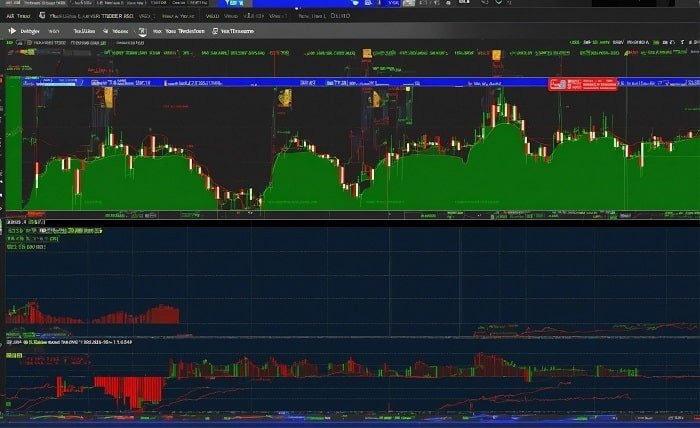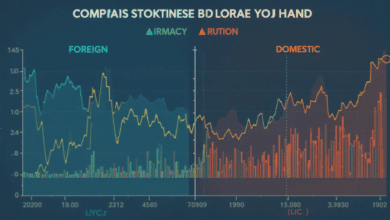StockEdge FII DII Data: Analyzing Institutional Investment Trends

StockEdge is a widely used platform by traders and investors to make informed decisions about the Indian stock market. The term “StockEdge FII DII data” refers to the insights provided by the platform on Foreign Institutional Investors (FII) and Domestic Institutional Investors (DII). These two categories of institutional investors play a crucial role in market movement and understanding their activities through StockEdge FII DII data can help investors better gauge the direction of the stock market.
The data provided by StockEdge gives valuable insights into buying and selling activities by FIIs and DIIs. Tracking the StockEdge FII DII data helps individual investors understand the market sentiment, which influences their trading and investment strategies. Understanding this information can improve decision-making by giving a broader perspective of market activities.
What Are FIIs and DIIs?
Foreign Institutional Investors (FIIs) and Domestic Institutional Investors (DIIs) are key players in the Indian stock market. StockEdge FII DII data provides valuable insights into the behavior of these institutional investors, who collectively hold a significant portion of the market.
FIIs are investors or investment funds that are based outside of India and invest in Indian equities and other financial assets. On the other hand, DIIs are Indian entities, including mutual funds, insurance companies, and pension funds that invest within the country. The StockEdge FII DII data allows us to monitor the capital flow from these institutions, thereby indicating overall market trends.
The activities of FIIs and DIIs can significantly impact stock prices. With StockEdge FII DII data, investors can understand how these institutions are positioning their portfolios, allowing them to align their own strategies accordingly.
Importance of StockEdge FII DII Data for Investors
StockEdge FII DII data plays a significant role in the decision-making process for investors. It offers a transparent view of institutional buying and selling patterns, which ultimately impacts market movement.
By analyzing StockEdge FII DII data, retail investors can understand where the big money is flowing. Since FIIs and DIIs have access to vast research and analysis, tracking their movements can help individual investors follow the “smart money” trend. This provides a sense of security when deciding which stocks or sectors to invest in.
Moreover, StockEdge FII DII data helps to gauge the market sentiment. If FIIs are buying heavily, it suggests positive sentiment, while selling by FIIs may indicate caution. Similarly, DIIs often act as a stabilizing factor by purchasing stocks when FIIs exit the market, which can prevent a sharp fall in the indices.
How to Access StockEdge FII DII Data
Accessing StockEdge FII DII data is straightforward and easy, thanks to the StockEdge platform’s user-friendly interface. StockEdge provides data on FII and DII activities through its application and website, allowing investors to keep track of institutional investment flows.
To access StockEdge FII DII data, users need to download the StockEdge app or visit the StockEdge website. Within the app, there is a dedicated section that provides FII and DII data, highlighting daily, weekly, and monthly trends. This helps investors understand the cumulative buying or selling behavior of institutional investors over a period.
StockEdge also provides insights into sector-wise FII and DII investments, giving investors a clear picture of which sectors are being favored by institutions. By keeping an eye on StockEdge FII DII data, investors can stay informed about the latest market activities and make decisions based on data-driven analysis.
Interpreting StockEdge FII DII Data for Better Investments
Understanding and interpreting StockEdge FII DII data is crucial for investors to make informed decisions. The data provided by StockEdge can be overwhelming for beginners, but breaking it down into simpler terms can help.
StockEdge FII DII data includes information such as the total value of purchases and sales made by FIIs and DIIs on a daily basis. By analyzing the net purchases or sales, investors can determine if institutional investors are bullish or bearish on the market. For example, a consistent pattern of net buying by FIIs might indicate an uptrend in the market.
Furthermore, StockEdge FII DII data also provides insights into which sectors or stocks institutions are targeting. This information can be helpful for investors looking to make sectoral bets. For example, if FIIs are investing heavily in technology, it may signal a good time to explore opportunities in that sector.
StockEdge FII DII Data and Market Trends
StockEdge FII DII data plays an instrumental role in determining market trends. Since institutional investors hold a large part of the market, their buying and selling activities can create short-term trends in the market.
The StockEdge FII DII data helps investors understand whether institutions are optimistic or cautious about the market. FIIs often lead the market movements, as they have larger capital inflows, while DIIs generally provide stability to the market during corrections. By analyzing this data on StockEdge, investors can identify potential trends and take positions accordingly.
The analysis of StockEdge FII DII data is particularly useful during times of market uncertainty. It helps investors understand the sentiment of institutional investors, which can provide early signals regarding upcoming market volatility or a potential rally.
How StockEdge FII DII Data Affects Stock Prices
The influence of StockEdge FII DII data on individual stock prices is profound. When institutions decide to invest or divest in a particular stock, it can lead to a significant change in its price due to the sheer volume of shares being bought or sold.
When FIIs buy a large quantity of shares, it generally pushes the price of the stock upwards, as the demand for the shares increases. Conversely, when there is heavy selling by FIIs, it can lead to a decline in the stock price. Monitoring StockEdge FII DII data can help investors stay ahead by predicting these movements.
For retail investors, the StockEdge FII DII data is an important tool to avoid sudden shocks in their portfolio. By being aware of institutional activities, investors can identify any potential overbought or oversold conditions, helping them make timely decisions to enter or exit positions.
Utilizing StockEdge FII DII Data for Sectoral Analysis
StockEdge FII DII data can also be utilized for sectoral analysis, allowing investors to understand which sectors are being favored by institutional investors. FIIs and DIIs often target specific sectors based on their growth potential, macroeconomic factors, and market sentiment.
By analyzing StockEdge FII DII data, investors can gain insights into which sectors are witnessing heavy buying or selling. This can help in understanding sectoral trends and identifying potential opportunities for investment. For instance, if FIIs are buying heavily in the banking sector, it may indicate confidence in that sector’s growth prospects.
Sectoral analysis using StockEdge FII DII data helps investors to diversify their portfolios effectively. It also enables them to align their investments with sectors that are backed by institutional capital, potentially providing greater returns.
The Limitations of StockEdge FII DII Data
While StockEdge FII DII data is a powerful tool, it does come with certain limitations that investors should be aware of. One key limitation is that FII and DII data only provide historical insights, and past activities may not always indicate future trends.
StockEdge FII DII data can also be subject to delays, and the data may not always reflect real-time market conditions. Institutional investors may change their strategies quickly, and relying solely on historical data may lead to incorrect assumptions about market direction.
Furthermore, StockEdge FII DII data does not account for other market-moving factors, such as global economic events, political decisions, or sudden changes in market sentiment. Investors should use this data as part of a broader analysis rather than solely relying on it to make investment decisions.
Conclusion
The “StockEdge FII DII data” is a valuable resource for retail investors looking to track institutional investment flows and make informed decisions. By analyzing the buying and selling patterns of FIIs and DIIs, investors can gain insights into market sentiment, identify trends, and make better investment choices.
StockEdge provides easy access to this data, allowing investors to stay informed about the latest market activities. While the data is a powerful tool, it is important for investors to consider other factors and conduct their own research before making any investment decisions. Properly understanding and interpreting StockEdge FII DII data can significantly enhance an investor’s ability to navigate the stock market successfully.
FAQs
1. What is StockEdge FII DII data?
StockEdge FII DII data provides information on the buying and selling activities of Foreign Institutional Investors (FIIs) and Domestic Institutional Investors (DIIs) in the Indian stock market.
2. How can StockEdge FII DII data help investors?
StockEdge FII DII data helps investors understand market sentiment by tracking the buying and selling patterns of institutional investors, which can influence market direction.
3. Where can I access StockEdge FII DII data?
StockEdge FII DII data can be accessed through the StockEdge mobile app or website, which provides daily, weekly, and monthly insights.
4. Is StockEdge FII DII data reliable for making investment decisions?
StockEdge FII DII data is reliable for understanding market trends, but investors should also consider other factors and conduct independent research before making decisions.
5. Can StockEdge FII DII data predict future market trends?
StockEdge FII DII data provides historical insights, which may help identify trends, but it cannot guarantee predictions of future market movements.





